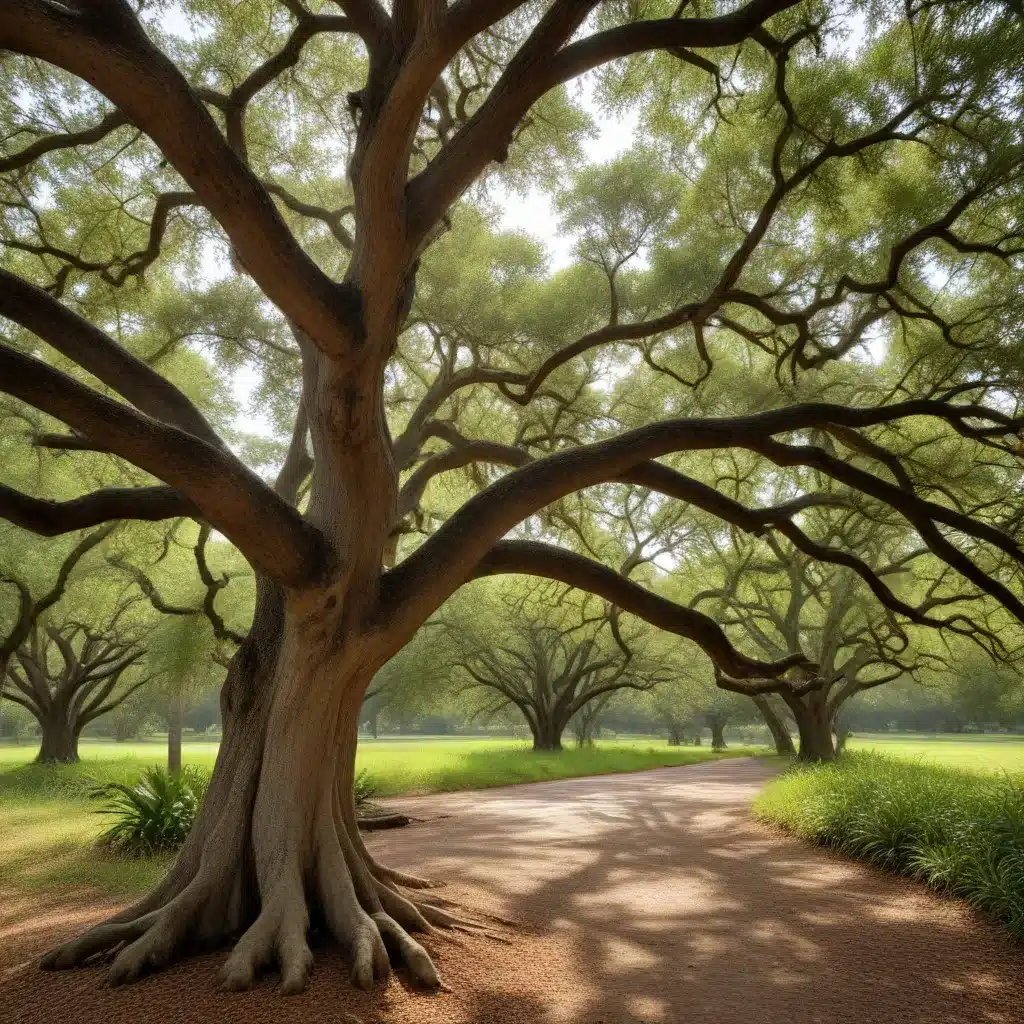
The water oak (Quercus nigra) is a captivating deciduous tree species native to the southeastern United States. As a member of the oak (Quercus) genus, the water oak showcases the quintessential features that make oaks such beloved and iconic landscape elements. From its broad, lobed leaves to its stately massive trunk and spreading canopy, the water oak embodies the majesty and enduring presence that have made oaks cherished by arborists, horticulturists, and the general public alike.
Tree Types and Species
Before delving into the distinctive characteristics of the water oak, it’s important to situate this tree within the broader context of deciduous and evergreen tree species. Deciduous trees, such as oaks, maples, and elms, are characterized by their seasonal leaf shedding, where they lose their foliage during the autumn months. In contrast, evergreen trees, including pines, firs, and cedars, maintain their needle-like or scale-like leaves year-round, providing a lush, verdant presence even in the winter.
Within the diverse array of deciduous tree species, the oak genus (Quercus) stands out as one of the most prominent and widely recognized. Oaks are known for their sturdiness, longevity, and ecological significance, with over 600 species found across the Northern Hemisphere. The water oak, with its distinctive features and adaptations, is just one member of this vast and remarkable tree family.
Water Oak Tree Characteristics
Physical Attributes
The water oak is characterized by its broad, lobed leaves that typically measure 4-8 inches in length. These leaves display a distinctive dark green color on the upper surface and a pale, glaucous (bluish-green) underside. The leaves’ rounded, sometimes irregularly shaped lobes and smooth, glossy texture contribute to the water oak’s unique visual appeal.
The tree’s trunk is often massive and stout, with a rugged, deeply furrowed bark that develops as the tree matures. The water oak’s sprawling, wide-spreading canopy can reach impressive dimensions, often spanning 50-80 feet in diameter and providing ample shade and shelter.
Habitat and Environment
The water oak thrives in the warm, humid climates of the southeastern United States, particularly in areas with well-drained, moist soil conditions. It is commonly found in riparian habitats along rivers, streams, and wetlands, as well as in upland forests and urban landscapes.
This species exhibits a remarkable tolerance for a variety of soil types, including sandy, loamy, and clay-based soils, as long as they provide adequate drainage. The water oak’s adaptability to diverse environments has made it a popular choice for landscape design and urban forestry applications throughout its native range.
Growth Patterns
The water oak is considered a medium to large-sized tree, with a mature height typically ranging from 50 to 80 feet. Its growth rate is considered moderate, with the tree reaching its full stature over the course of several decades.
One of the water oak’s most distinctive features is its longevity, with some individuals living for over 300 years. This remarkable lifespan, combined with the tree’s majestic appearance and resilience to environmental stresses, has contributed to its enduring popularity and cultural significance.
Botanical Taxonomy and Classification
Genus and Species
The water oak (Quercus nigra) belongs to the oak (Quercus) genus, which is a member of the beech family (Fagaceae). The species epithet “nigra” refers to the tree’s dark-colored bark, which becomes increasingly rugged and furrowed as the tree matures.
Taxonomic Hierarchy
Within the broader classification system, the water oak is categorized as follows:
Kingdom: Plantae (Plants)
Division: Tracheophyta (Vascular plants)
Class: Magnoliopsida (Dicots)
Order: Fagales
Family: Fagaceae
Genus: Quercus
Species: Quercus nigra
Scientific Nomenclature
The scientific name for the water oak, Quercus nigra, follows the binomial nomenclature system, which assigns a unique two-part name to each species. The first part, Quercus, is the genus name, while the second part, nigra, is the species epithet.
This precise scientific nomenclature is crucial for accurately identifying and classifying the water oak within the broader context of the oak genus and the plant kingdom. It also enables clear communication and understanding among botanists, horticulturists, and tree care professionals.
Ecological Role and Significance
Ecosystem Functions
The water oak plays a vital role in the ecosystems it inhabits, serving as a keystone species that supports a diverse array of flora and fauna. Its sprawling canopy provides shade and shelter for a wide range of birds, mammals, and insects, while its acorns serve as a valuable food source for many wildlife species.
Moreover, the water oak’s extensive root system helps to stabilize soil, preventing erosion and promoting healthy watershed conditions. As a deciduous tree, it also contributes to the nutrient cycling process, as its fallen leaves decompose and enrich the surrounding soil.
Importance to Wildlife
The water oak is a crucial resource for many wildlife species, particularly in the southeastern United States. Its acorns are a staple food source for animals such as deer, squirrels, and wild turkeys, while its foliage and branches offer nesting sites and cover for a diverse array of birds, including woodpeckers, owls, and songbirds.
Furthermore, the water oak’s hollow cavities and crevices provide shelter and denning sites for small mammals, reptiles, and amphibians, contributing to the overall biodiversity of the ecosystems it inhabits.
Cultural and Historical Relevance
The water oak has long held a prominent place in the cultural and historical traditions of the southeastern United States. Many Native American tribes, such as the Choctaw and Chickasaw, utilized the tree’s wood, bark, and acorns for a variety of purposes, including construction materials, traditional medicine, and food sources.
In the modern era, the water oak continues to be revered for its majestic appearance and ecological significance, often serving as a symbol of strength, resilience, and the enduring connection between humans and the natural world. TriCounty Tree Care is proud to champion the preservation and responsible management of this remarkable tree species, ensuring its continued presence in the landscapes and ecosystems it graces.


